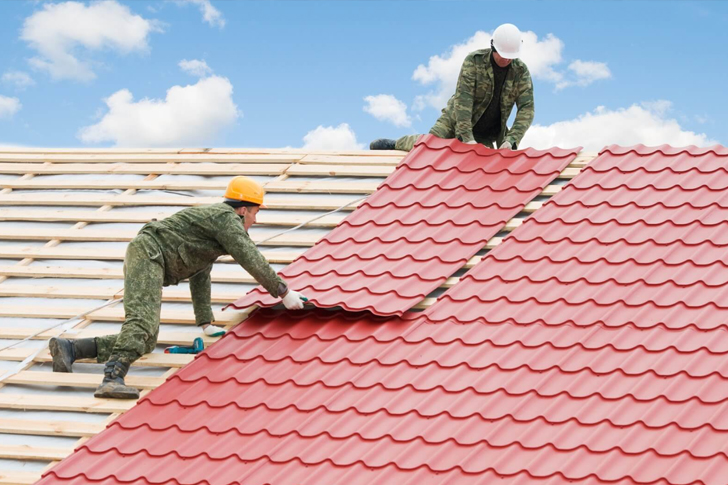Improve Your Home with a Roof Replacement
Introduction to Roof Replacement

Improving your home goes beyond cosmetic upgrades; significant structural changes such as roof replacement can not only elevate its appearance but also enhance its functionality and safety. A roof is more than just a covering; it plays a critical role in protecting your home from various elements and contributes significantly to energy efficiency. This article will delve into the importance and benefits of roof replacement, helping homeowners make informed decisions about this vital home improvement project.
The Right Time for Roof Replacement
Knowing when to replace your roof is crucial. Typically, roofs have a lifespan ranging from 20 to 50 years, depending on the material used. Asphalt shingle roofs, the most common type in the U.S., usually last about 20 to 30 years, while materials like metal, tile, and slate can last much longer, up to 50 years or more. Signs that you may need a roof replacement include frequent leakage, broken or missing shingles, sagging, and extensive moss or mold growth, which could indicate moisture retention that potentially compromises the roof’s integrity.
Climate also plays a significant role in determining the lifespan of a roof. For instance, homes located in areas prone to severe weather conditions like hurricanes, hailstorms, or extreme temperatures may require more frequent roof replacements.
Benefits of Roof Replacement
Replacing an old or damaged roof can provide numerous benefits. Firstly, it significantly boosts your home’s curb appeal, which can be crucial if you’re considering selling your home. Real estate studies suggest that roof replacement offers a return on investment (ROI) of about 60% to 68%. More importantly, a new roof increases the safety and security of your home, providing peace of mind that your property is well-protected against environmental elements.
Energy efficiency is another major advantage. Modern roofing materials are designed to reflect UV rays, thereby reducing the heat absorbed by your home. This can lead to lower cooling costs, especially in warmer climates. According to the U.S. Department of Energy, homeowners can save up to 15% on their annual cooling costs with the installation of an Energy Star-rated roof.
Additionally, a new roof improves your home’s insulation and ventilation, which can help regulate indoor temperatures and reduce the likelihood of issues like mold and mildew growth.
Choosing the Right Materials
When considering a roof replacement, selecting the right materials is key. Each material offers different benefits and has a distinct lifespan. Here’s a brief overview:
- Asphalt Shingles: Economical and easy to install, they are suitable for most residential homes and come in various colors and styles.
- Metal Roofing: Known for its durability and resistance to extreme weather, metal roofing can last up to 70 years. It’s also lightweight and reflects solar radiant heat.
- Tile: Clay and concrete tiles are incredibly durable and can add a unique aesthetic to your home. They are excellent for hot climates and can last 50 years or more.
- Slate: One of the most durable roofing materials, slate can last over 100 years if well maintained. However, it is more expensive and heavier, requiring strong structural support.
Your choice should also consider factors such as local building codes, the structure of your existing roof, and aesthetic fit with your neighborhood’s style.
The Cost of Roof Replacement
The cost of replacing a roof varies widely depending on size, material, and labor. On average, homeowners can expect to pay between $5,000 and $10,000 for a standard asphalt shingle roof replacement, while materials like metal and tile may increase these costs significantly. Premium materials like slate could see costs soar above $25,000 for a typical family home.
It is advisable to get multiple quotes from reputable roofers and ensure they include everything from the removal of your old roof to the installation and cleanup. Substantial warranties that cover both materials and labor can also safeguard your investment.
Installation and Maintenance
A professional installation is critical for ensuring the longevity of your new roof. Certified and experienced roofers can provide a thorough assessment and carry out the installation according to industry standards. Once installed, regular maintenance is crucial to maximize lifespan and efficiency. This includes cleaning gutters, inspecting for damage after severe weather, and addressing minor repairs promptly to prevent more significant issues.
Conclusion
Roof replacement is a considerable investment in your home that can offer aesthetic, functional, and financial benefits. By choosing the appropriate materials and hiring qualified professionals to perform the installation, you can ensure that your new roof will safeguard your home and contribute to overall energy efficiency for many years. Regular maintenance will further enhance its performance and prolong its lifespan, making it a wise investment for any homeowner.







Recent Comments